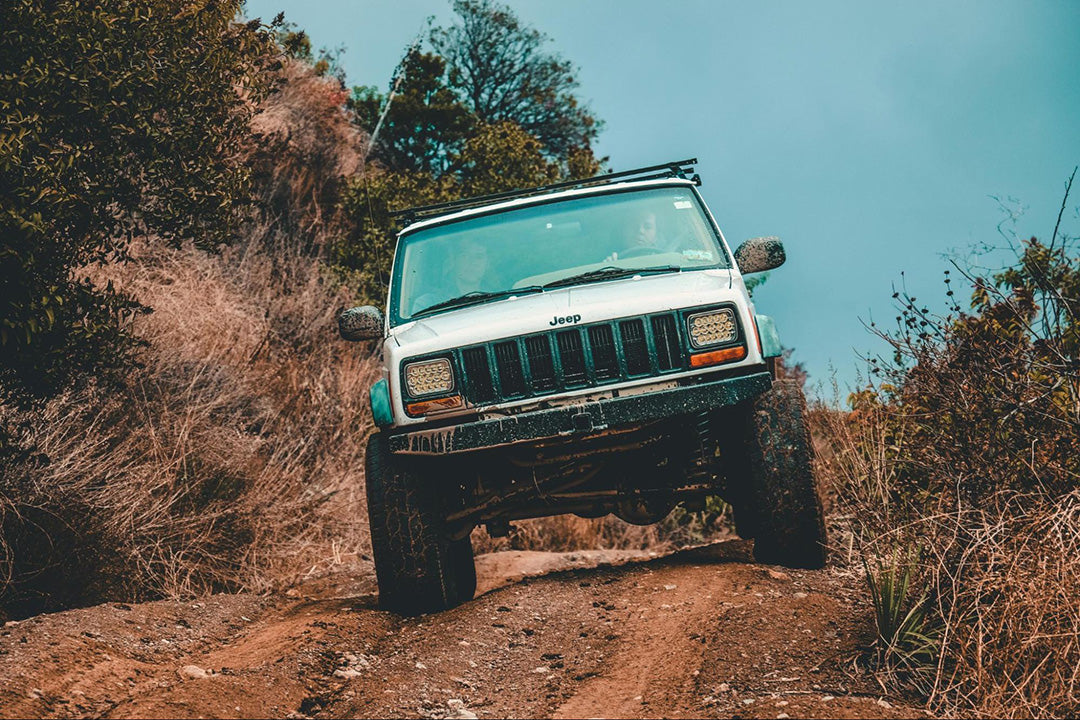

by John ADV Fiberglass | Mar 5, 2025, 8:58AM
Offroading is an exciting way to explore rugged landscapes, push your vehicle to its limits, and experience the thrill of adventure. But, whether you’re a beginner hitting the trails for the first time or an offroad enthusiast looking to tackle more challenging terrain, safety should always come first.
At ADV Fiberglass, we understand that offroading isn’t just about performance—it’s about preparedness, skill, and making sure you return home safely.
Here are some essential offroading safety tips to help you navigate the trails with confidence.
Before venturing off the pavement, take the time to familiarize yourself with your vehicle’s specifications. Understanding your ground clearance, approach and departure angles, and 4WD settings can make all the difference on tough terrain. If you’re modifying your ride with fiberglass body panels from ADV Fiberglass, ensure your upgrades enhance both form and function.
Check your vehicle’s drivetrain, suspension, and tire pressure before each trip.
Learn how to engage 4WD properly and when to use low-range gearing.
Avoid pushing your vehicle beyond its limits, especially in unfamiliar conditions.
Not all trails are created equal. Research your destination in advance to understand the level of difficulty, potential hazards, and weather conditions. Many trails are rated based on skill level, so choose one that matches your experience.
Use maps, GPS apps, or trail guides to plan your route.
Be aware of recent weather conditions that could affect trail conditions (mud, flash floods, rockslides).
Stick to designated trails to protect the environment and avoid getting lost.
Offroading is best enjoyed with a group or at least one other vehicle. If you get stuck, break down, or run into trouble, having a second vehicle can be a lifesaver.
Always have a spotter when attempting technical terrain.
Use two-way radios or satellite communication devices in areas with no cell service.
Let someone know your itinerary and expected return time before heading out.
Having the right gear can mean the difference between a minor inconvenience and a serious emergency. Always pack the essentials before hitting the trail.
Basic recovery gear: Tow straps, a winch, a jack, and traction boards.
Emergency supplies: First aid kit, flashlight, extra food, and water.
Tools and spare parts: Tire repair kit, jumper cables, and extra fluids (oil, coolant, transmission fluid).
Personal protection: Gloves, eye protection, and weather-appropriate clothing.
Lowering your tire pressure can improve traction and ride comfort on rough terrain. The right PSI will depend on the type of terrain you're tackling.
Sand & Mud: Reduce PSI to 12-18 for better flotation and grip.
Rocks & Trails: Keep PSI between 18-25 for added flex and grip.
Highway Driving: Always reinflate your tires before returning to pavement to maintain control and fuel efficiency.
Offroad driving isn’t the same as cruising on the highway. Mastering a few key techniques will keep you in control and prevent unnecessary wear and tear on your vehicle.
Maintain momentum on loose surfaces like sand or mud.
Avoid sudden acceleration or braking to prevent losing traction.
Approach obstacles slowly and at an angle to maintain tire contact.
Use engine braking instead of riding the brakes when descending steep hills.
Even experienced offroaders get stuck occasionally. Knowing how to recover your vehicle safely is a crucial skill.
If stuck, try rocking your vehicle back and forth in low gear before using recovery tools.
Use a winch or tow strap only when properly secured to recovery points.
Never stand near tensioned winch cables or tow straps—they can snap unpredictably.
Offroading is about adventure, but it also comes with the responsibility of protecting the environment and ensuring trails remain open for future generations.
Follow Tread Lightly!principles—stay on designated trails and avoid damaging vegetation.
Pack out all trash and avoid leaving anything behind.
Be respectful of other offroaders, hikers, and campers.
At ADV Fiberglass, we build high-quality fiberglass body panels designed for durability, performance, and style. Whether you’re tackling rocky trails, sandy dunes, or desert racing, our products help you push the limits without compromising on strength or safety.
Ready to upgrade your ride? Explore our product lineup and follow us on social media for more offroading tips, gear recommendations, and adventure inspiration.
📍 Shop Now
📍 Follow us on Facebookand Instagram
📍 Share your offroading stories with #ADVAdventures2025
Offroading is about more than just the thrill—it’s about preparation, skill, and safety. Whether you're just starting out or looking to take on more challenging terrain, following these safety tips will help you enjoy every adventure while keeping yourself and your vehicle in top condition. Stay safe, and we’ll see you on the trails!
 MADE IN USA
MADE IN USA INDUSTRY LEADING CUSTOMER SERVICE
INDUSTRY LEADING CUSTOMER SERVICE A+ FITMENT & FINISH
A+ FITMENT & FINISH